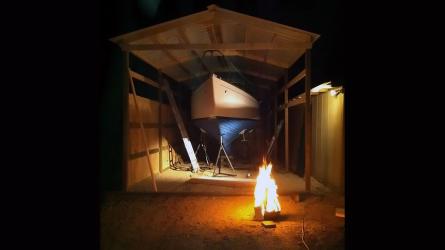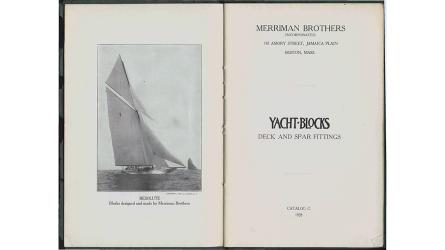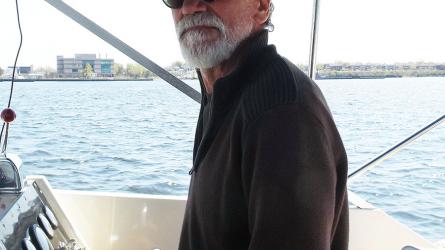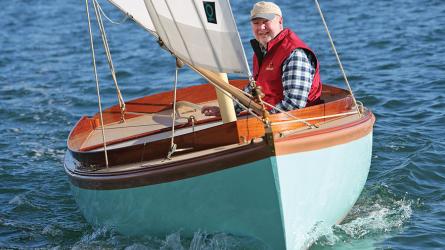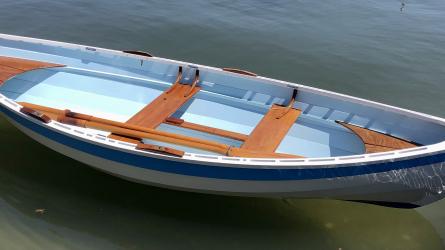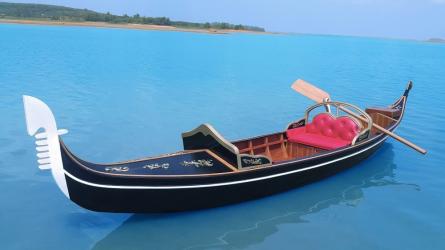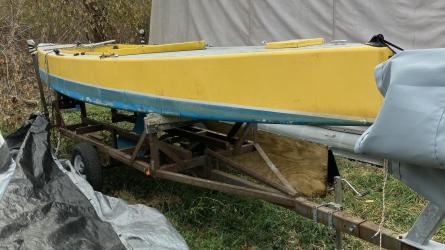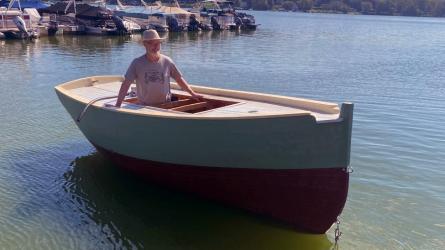Visiting Bahamian Ruins By Boat—Part I
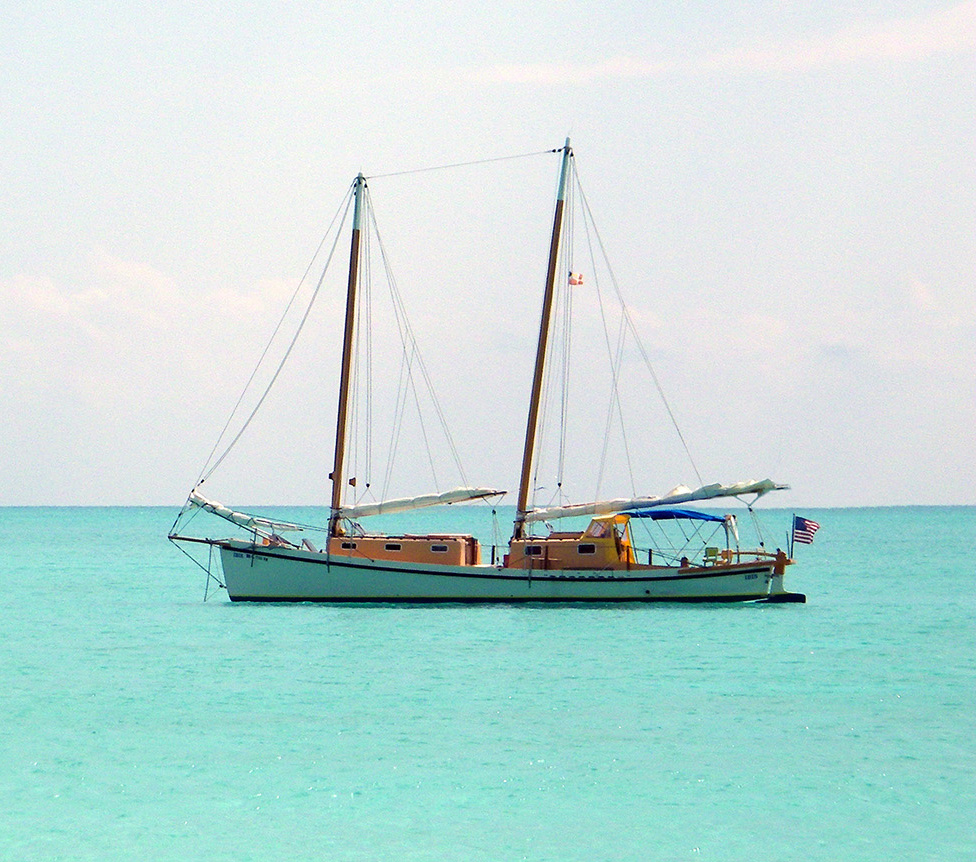
IBIS anchored off the Russell Plantation, Hawksbill Cay, Exuma Land & Sea Park, Bahamas.
In cruising, sometimes something good comes out of something bad. On Friday the 13th of April 2012, I was sailing homeward bound in my sharpie schooner IBIS. I had three close friends on board, and we were enjoying the unparalleled beauty of the Exuma Cays Land and Sea Park. We had been anchored for the night off the crescent beach at the southwest end of Hawksbill Cay, a place I have visited many times. I have known for years that there are ruins of a colonial plantation on Hawksbill, and I have always wanted to explore them. Exploring ruins is a lifelong passion of mine.
The morning of the 13th, the four of us went for a hike north along the beaches and sandstone ledges of the west bight of Hawksbill, seeking the ruins. After an hour or so, we gave up and went back to IBIS to continue sailing north. As fate would have it, just as we were leaving the north end of Hawksbill behind, the diesel overheated. I turned east and aimed IBIS for the beach, to anchor and fix the problem. Only a sharpie could do this, as the banks east of Hawksbill nearly dry out at low tide. We crossed easily with our 2′ 6″ draft, and anchored next to a beautiful replica of a 1930s power cruiser. She was built in cold-molded wood to (I think) an old Elco design.
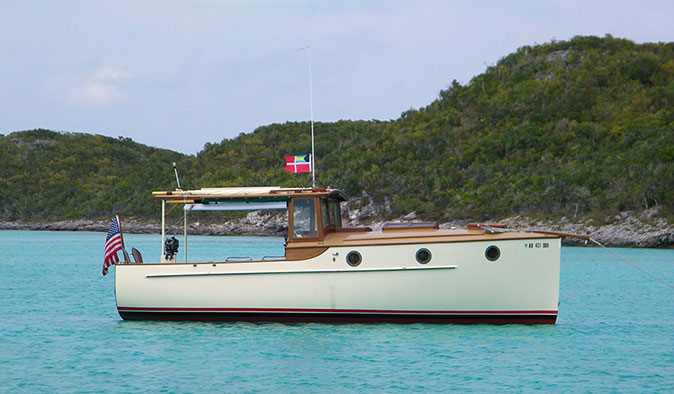
I easily fixed the overheating problem—the raw water pump had a two-year old impeller which had started to disintegrate, blocking water flow to the diesel. Since we were anchored off a part of the island I had never before visited (I didn’t even know it was possible to access it by boat), we all took off for another hike… and the ruins were right there!
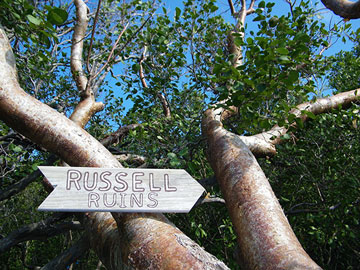
The sign for the Russell Family ruins.
The Russell family were Loyalists (American colonials faithful to the English King) who were given a grant to settle on Hawksbill Cay in 1785. Loyalists—or Tories—were being driven out of the new United States by revolutionaries who condemned all loyalty to Britain. Particularly in the south, Loyalist plantation owners were driven off their land, often tarred and feathered, even raped and murdered. Some got out with their families and possessions, and some were cast nearly naked to the winds of fate. Many headed for the Bahamas to make a new start in life.
Unfortunately, the barren, rocky, hot sandstone islands and cays right near the Tropic of Cancer were not the lush, fertile fields of South Carolina, and techniques which had worked on the mainland were doomed to failure in the islands. The displaced Loyalists had little choice but to try. One of my all-time favorite books is Wind from the Carolinas, by Robert Wilder, who (in novel form) tells the story of this migration, through generations, beautifully and sensitively.
The Bahamas are geologically unique on Earth. Shifting tectonic plates created a north-south rift two hundred million yeas ago in the middle of a land mass called Pangaea. Within the rift, an ocean was formed, which in turn filled with debris from the diverging plates along the rift. As the plates became continents, the rift plateau became the Bahama Platform. In the shallow waters, coral grew, combined with other calcareous organisms. Over millennia, the coral polyps and shells were pulverized by sea and wind, disseminating carbon particles over the coral reefs, eventually forming islands and cays. Reef sediment leveled into the chalky mud we call marl. The relentless hot Trade Winds baked the marl into sandstone, and pink coral sand accrued into endless, perfect beaches. Sand swept up to make dunes, which solidified into ledges of hard limestone. The action of wind, sun and waves (all relentless), created cliffs, bridges, caves and hollowed pockmarked landscapes that look like something from another world. Much of the Bahamas looks like someone blew billions of bubbles of all sizes into liquid clay, which then dried and broke up into sharp, jagged, hollowed out rocks and ledges, which are profoundly difficult for people to even walk across… much less turn into plantations!
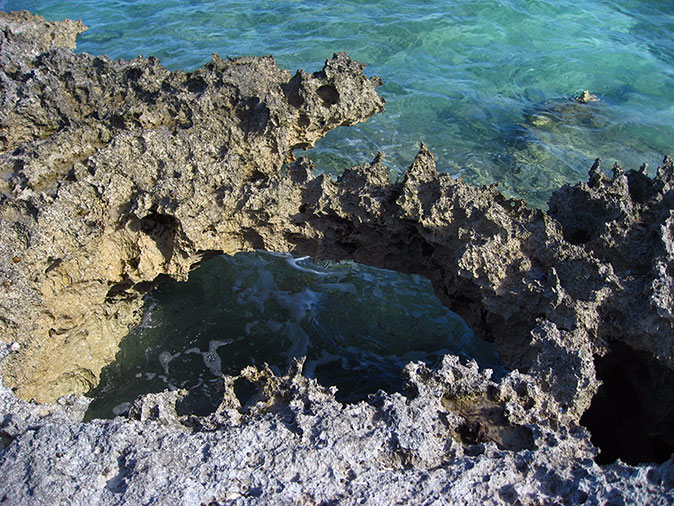
Typical Bahamian coral-sandstone formations.
Much of the sandstone terrain is sharp and rocky, with low-lying scraggly salt-tolerant bushes and stunted trees, blessed by tiny wildflowers. The largest land-pits (caused by the erosion of sandstone deposits of different density) can be nearly hemispherical in shape, and yards in diameter. Over hundreds of years, these depressions filled with organic debris—animal- and plant-waste, seaweed, dead crabs—and a poor kind of soil was created. Along comes Homo Sapiens with a pocket full of seeds, ash from a fire, dung from bat caves, guano from bird rocks, and fish remains… and with a few years’ hard work, onions, peppers, tomatoes, cabbage, pigeon peas, cotton, sugar cane, sisal, papaya, banana, tamarind and mango trees start to bear. Assuming a hurricane doesn’t blow it all away or wash it out in a storm surge.
Life in the Bahamas is very tough. It makes you slow down, think how to stay alive, and learn to love the small miracles of life. Under the sea surface, the myriad brilliantly colored coral formations spread out over thousands of square miles, teeming with tropical fish, conch (giant snails), and spiny crayfish (lobsters). Edible-incredible!
The indigenous Lucayan Indians were rapidly wiped out by the invading Spaniards: Every last man, woman and child died, leaving not one drop of blood remaining of the gentlest people ever to live on Earth. I like to theorize that geography does affect Human behavior… and that the Bahamas has a calming, gentling effect on all who travel there. This would include the white invaders, and the black slaves they brought with them, as well as the vagabond sailors (like me) who fall under their magic spell.
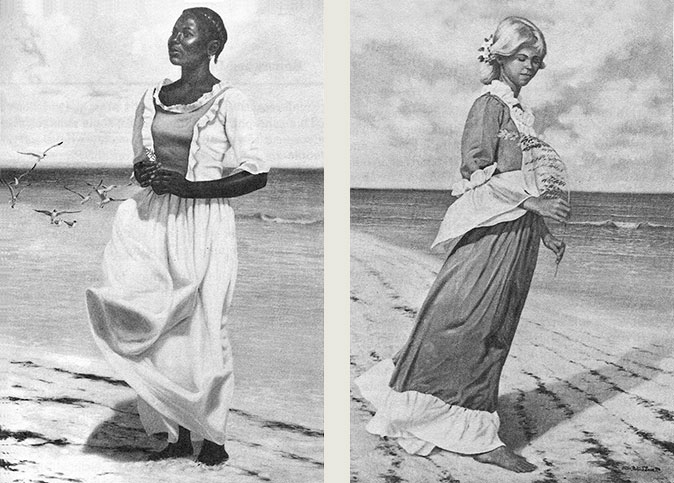
Oil paintings by Alton Lowe, representing the slave woman facing the land, and the Loyalist woman facing the sea (Courtesy of the Albert Lowe Museum, Bahamas) Note that they are both barefoot!
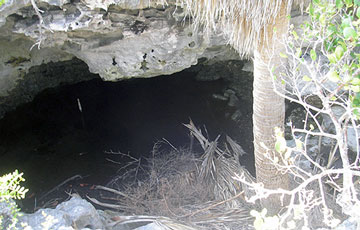
An old cistern on the Russell Land still held fresh water.
I can’t help but wonder about the Russell family, arriving on this barren, overgrown, inhospitable rock, with almost nothing… in 1785! How many came? Were there small children? What hope and vision dwelled in their breasts that they could eke out a living from this desolate rocky terrain?
The sandy trail from the beach lead us to the remains of tiny one room houses, made from sandstone and coral, cemented together with pulverized burnt conch shells mixed into a primitive mortar. We found remains of old wells and cisterns, and primitive “Bee-Hive Ovens” made from hollow rocks, in evidence all over the Bahamas.

The Russell Family homes were tiny—some seemed little more than 100 square feet.
The ruins were crumbling and eroded—mostly just piles of rock with an occasional shard of glass or china. Vegetation had nearly taken everything back.
Legend has it that Hawksbill Cay was inhabited until 1900, whence the last resident— husband of a granddaughter of the original settlers—passed away. The Russell family and their descendents farmed Hawksbill cay, and all neighboring cays within easy reach by boat.
Try as I might, I cannot imagine being in their shoes (which didn’t last long!), and living in their lives. Cut off from their parent nation—to whom they remained loyal—and amputated from their adopted land—which condemned them without mercy—they eked out a living from some of the most difficult land on Earth, baked by a relentless sun and blasted by the unbelievable violence of hurricanes.
I can only hope that the incredible beauty, solitude, and peace of the sweet Bahamas made their lives worthwhile—beyond bare survival.
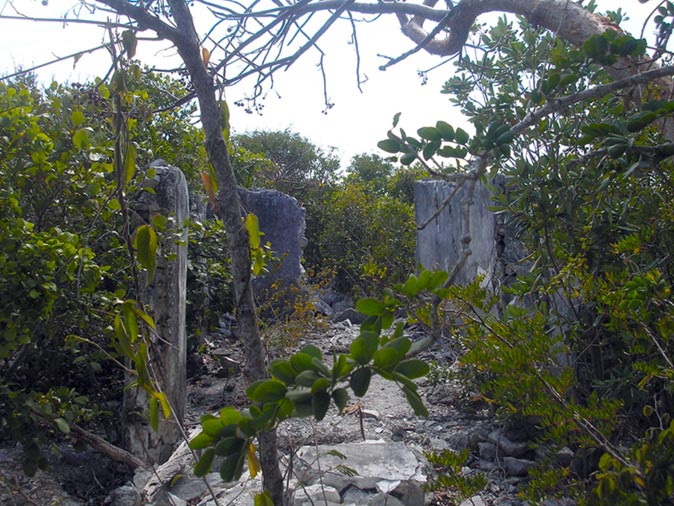
The brush and shrubs have taken back almost everything left by the Russells.
Fort Pierce, Florida, 12/16/2013
